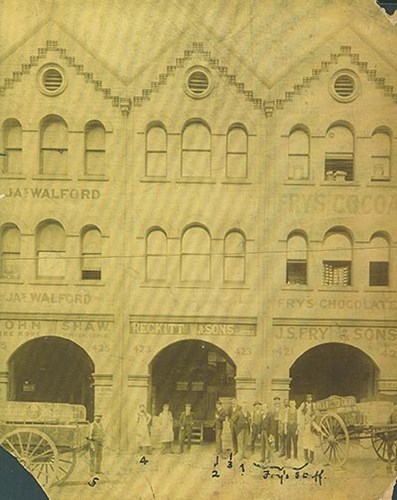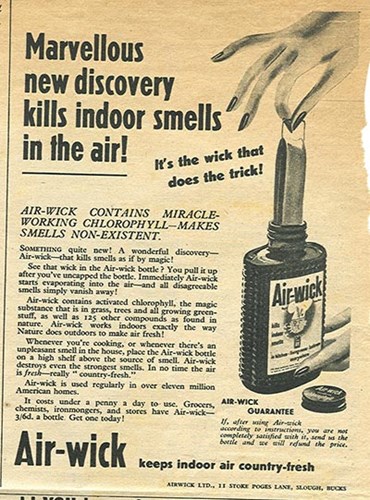Our story | Our heritage: The little-known facts and stories that have made us who we are today
RB has been protecting, healing and nurturing for centuries. Over the years, we’ve grown a lot. And just as we’ve grown as a business, so have our archives. Throughout this series – Our story l Our heritage – we've been uncovering stories from our past that will help guide our future. And we’re ensuring that no stone is left unturned...
So today, we’re uncovering some of RB's untold stories, sharing little-known facts about our brands as well as hearing of tales of days gone by from colleagues all over the world.
RB goes global
RB has always had a global vision. Backed by the best scientists and promoted by the best marketeers, there was no stopping our brands from achieving global interest, even back in the 1800s.
Reckitt & Sons’ first ‘branch’ opened in Sydney, Australia in 1886. While in Australia, the company noticed a new form of metal polish. Traditionally made in the form of a paste, metal polish in Australia was sold in the form of liquid. And it was flying off the shelves. This innovative new approach to polish was developed by Reckitt & Sons and in 1905, Brasso was launched.

Moving forward slightly to 1915, Reckitt & Sons was turning its attention to China. A trade agreement was formed and by 1920, a select collection of brands were being distributed in certain areas of the country. By the 1930s, the collection of brands grew and sales of Brasso, Dettol, Harpic and Steradent were performing well across China. And the rest, as they say, is history.
Around this time, the decision was made by the board to explore opportunities in South America. In 1925, the Atlantis factory in Santo Andre na Borda do Campo, Brazil was completed, and production began.
Rosa continued, “Along with a digital world comes greater communication and connectivity for colleagues around the globe. Before we had access to all of this technology, a group of colleagues and I created the grêmio – or ‘guild’ in English. We used to meet regularly to hold dances, barbeques and excursions in order to keep in touch, socialise and have fun!”
How did our brands get their names?
Careful consideration goes into the naming of our brands. We need a name that communicates scientific understanding and is comfortable and easy to pronounce for consumers, instilling a sense of trust. So, where do you start when naming a brand?
In the case of Mortein, J Hagemann – Mortein’s inventor – didn’t need to look too far for inspiration. He was German and his wife was French. So when it came to naming his new product, he took the French word for death ‘mort’ and the German word for one ‘ein’ to create a name that would inspire fear in flies all over the world!
You may wonder why Air Wick is called Air Wick. Well, the first Air Wick product – launched in the US in 1943 – did indeed have a wick. It was a chlorophyll-based formulation in a glass bottle which was dispersed through a wick. According to a 1948 UK advert for the product: "It's the wick that does the trick". You can’t argue with that.

If you’ve read our Durex and Harpic articles already, you’ll know where these brand names came from. We’ll be testing you later!
Rosina Baxter joined RB as a chemist in 1983 in Hull, UK, before moving into trademarks where she stayed until her retirement.
Since the beginning, we’ve been inspired to do the right thing. Always.
Did you know that Durex was responsible for the UK’s first free-standing condom machine? It was installed in a bus station in July 1992 in Nuneaton, UK. Headlines from the time included: ‘rubber on the roads’ and ‘it’s thumbs up for condoms’. This represented a huge cultural shift, making safe sex an option for thousands and inspiring other British councils to follow suit.
We’re now jumping across the pond to the US and back to 1911, when Mead Johnson Nutrition introduced Dextri-Maltose (its first infant feeding product) to the medical market. At this time however, lots of doctors didn’t have weighing scales. So Edward Mead Johnson provided them at cost to thousands of physicians up and down the US. Mead Johnson Nutrition joined RB in 2017 and you can find out more about our infant and child nutrition history by catching up on last week’s article.
Patrick Schaefer first walked through the doors at Mead Johnson Nutrition on 3rd April 1978.
Patrick continued, “Safety is a huge consideration, the sharing of information and collaboration across departments is great and colleagues are rewarded for their hard work. This is why I think it’s the best place to work in Evansville. Why else would I have been here for so long!”
Every story deserves to be heard
We believe that every story deserves to be heard – from the tales that came out of the sawmill once located at our Hull site (which was used to manufacture wooden crates for the transportation of products) to the details from our factory floors, where strict health and safety regulations were developed and unions were created as far back as 1920. The seemingly ‘everyday’ stories tell us about the journeys our brands, our people and our consumers have been on and helps guide our future innovation and growth.
Steve West started at RB’s Hull, UK site in 1988, where he was a Senior Product Manager in marketing. Now, he is responsible for meticulously archiving brand information and using this information to support teams from all over the world.
As always, a special thanks to our heritage team – Rosina and Steve – based in Hull, UK, who have been instrumental in the roll out of this campaign.
